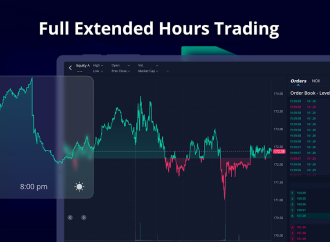In the fast-paced realm of international trade and commerce, few currencies wield the kind of influence that the US dollar commands. For decades, it has reigned supreme as the de facto global currency of choice for international transactions. Its ubiquitous presence has facilitated the movement of goods and services across borders and helped shape the
In the fast-paced realm of international trade and commerce, few currencies wield the kind of influence that the US dollar commands. For decades, it has reigned supreme as the de facto global currency of choice for international transactions. Its ubiquitous presence has facilitated the movement of goods and services across borders and helped shape the world’s economic landscape. However, this age-old dominance is now encountering challenges that could redefine the future of global trade.
The Dollar’s Reign: A Historical Perspective

Photo by Karolina Grabowska: https://www.pexels.com/photo/person-holding-fan-of-us-dollar-bills-4968649/
To understand the significance of the dollar in international trade, one must delve into its history. Following the Second World War, the United States emerged as the world’s leading economic superpower. In the spirit of reconstruction and collaboration, the Bretton Woods Conference in 1944 established the dollar as the world’s primary reserve currency, backed by gold.
This unprecedented move provided stability and predictability in international trade, allowing countries to peg their currencies to the dollar with confidence. The greenback became the bedrock of global trade, cementing its position as the world’s primary medium of exchange.
Challenges to Dollar Dominance
While the dollar’s supremacy has held strong for over half a century, the dynamics of international trade are evolving. Several factors are now posing challenges to the dollar’s unassailable status:
- Emerging Superpowers: The rise of economic powerhouses like China challenges the dollar’s monopoly. China has actively been internationalizing the renminbi (RMB) and pushing for its adoption in global trade, aiming to break free from the dollar’s stranglehold.
- Digital Currencies: The advent of digital currencies, including Bitcoin, Ethereum, and stablecoins, offers new avenues for international transactions. These cryptocurrencies promise efficiency, speed, and transparency, thereby potentially reducing the reliance on traditional fiat currencies like the dollar.
- Trade and Geopolitical Tensions: The ongoing trade disputes and geopolitical tensions have prompted countries to explore alternatives to the dollar, as it can be weaponized through sanctions or trade restrictions.
- Climate Change and ESG: Environmental, Social, and Governance (ESG) considerations are influencing the financial world. Green finance and sustainability may push international transactions toward currencies aligned with ESG principles, potentially undermining the dollar’s dominance.
The Future of Global Trade
Despite these challenges, the US dollar’s supremacy is unlikely to crumble overnight. Its liquidity, stability, and the sheer volume of dollar-denominated assets in the global financial system are formidable barriers to overcome. However, the landscape of international trade is evolving, and diversification is on the horizon.
The internationalization of the renminbi continues to gain momentum, with China signing currency swap agreements with multiple countries. The European Union has also sought to strengthen the euro’s position, particularly in energy trading, further diversifying the currency market.
As digital currencies gain traction, they may offer a more flexible and efficient means of conducting international trade, circumventing the dollar altogether. Central bank digital currencies (CBDCs) are also being explored by countries worldwide, which could change the game.
In Conclusion
The dollar’s impact on international trade and commerce is a topic of critical importance in our interconnected world. While the greenback’s dominance remains steadfast, the evolution of international trade dynamics and the emergence of digital currencies pose real challenges to its continued supremacy. As global trade evolves, its future remains uncertain, with potential consequences that could reshape the world’s economic order. It is a story worth watching closely in the coming years, as the dollar’s role in global trade continues to adapt to a changing world.





















Leave a Comment
Your email address will not be published. Required fields are marked with *